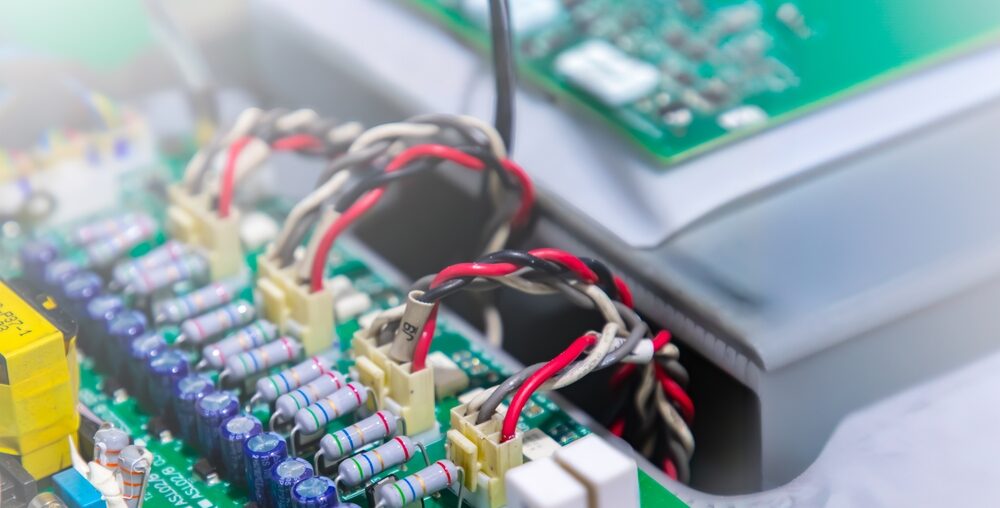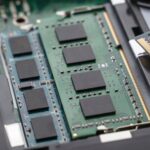Power surges are a hidden threat to IT hardware and computer systems. Without protection, electrical surges can cause irreparable damage to devices, data loss, and costly downtime. Surge suppressors act as a safeguard, protecting IT and computer hardware from unexpected voltage spikes.
In this guide, we’ll explore everything you need to know about surge suppressors, including how they work, the benefits of using them, the different types available, and essential buying tips. If you’re looking to protect your valuable IT equipment, this guide is for you.
2. What Are Surge Suppressors?
A surge suppressor, also known as a surge protector, is designed to protect electrical appliances from voltage spikes. Power surges occur when an electrical voltage increases, which can damage sensitive IT hardware and computer equipment.
Surge suppressors are essential components of any IT hardware setup. They prevent excessive voltage from reaching connected devices, ensuring the safety and longevity of your electronics. Surge suppressors are often used with desktops, servers, networking devices, and other essential IT infrastructure.
3. How Do Surge Suppressors Work?
Surge suppressors operate by diverting excess electrical current away from connected devices. When a voltage spike occurs, the suppressor detects it and redirects the extra current to the ground wire. This prevents the surge from reaching sensitive IT hardware and computer equipment.
The main component inside a surge suppressor is a Metal Oxide Varistor (MOV), which acts as a gatekeeper. When normal voltage flows, the MOV remains inactive. But when a surge happens, the MOV absorbs and diverts the excess energy.
4. Benefits of Using Surge Suppressors for IT Hardware
Investing in surge suppressors offers numerous benefits, especially for IT hardware and computer systems. Here’s why you should prioritize surge protection:
1. Protects Expensive Equipment
IT hardware like servers, routers, and computers are costly to repair or replace. A surge suppressor prevents damage, saving you thousands in potential repair costs.
2. Reduces Downtime
Electrical surges can cause IT infrastructure to crash. A surge suppressor ensures uninterrupted operations by safeguarding devices.
3. Prevents Data Loss
Data stored on hard drives and servers can be lost due to sudden power outages or electrical surges. Surge suppressors maintain the integrity of your data.
4. Increases Equipment Lifespan
Continuous exposure to small power fluctuations can shorten the lifespan of IT hardware. Surge suppressors provide a stable power flow, enhancing the longevity of your equipment.
5. Insurance Compliance
Some insurance policies require surge protection for electrical equipment. Installing surge suppressors could make you eligible for claim coverage in case of equipment failure.
5. Types of Surge Suppressors
Surge suppressors come in different types, each designed for specific use cases. Knowing which type to choose for your IT and computer hardware is essential.
1. Plug-in Surge Suppressors
These are the most common types used at home and in small office setups. They resemble power strips with multiple outlets and offer basic protection for desktops, laptops, and monitors.
2. Whole-House Surge Suppressors
Installed at the main electrical panel, whole-house surge suppressors provide surge protection for an entire building. They protect large IT systems, home appliances, and connected devices.
3. Line-Interactive UPS Systems
Uninterruptible Power Supplies (UPS) with built-in surge protection provide continuous power during outages. These are ideal for data centers and IT environments where uptime is critical.
4. Rack-Mount Surge Suppressors
Used in server rooms and data centers, rack-mount surge suppressors protect networking equipment, servers, and storage devices. They fit directly into a server rack, saving space.
6. Key Features to Look for in a Surge Suppressor
When choosing a surge suppressor for IT and computer hardware, keep these essential features in mind:
1. Joule Rating
The joule rating indicates how much energy the suppressor can absorb before failing. A higher rating means better protection. Aim for at least 1,000 joules for computer hardware.
2. Number of Outlets
Choose a surge suppressor with enough outlets for all your devices. Opt for models with widely spaced outlets for larger adapters.
3. Clamping Voltage
Clamping voltage refers to the threshold at which the surge protector activates. Lower clamping voltages provide better protection.
4. Response Time
Look for surge suppressors with fast response times (less than 1 nanosecond) to ensure quick protection during surges.
5. Indicator Lights
LED indicator lights notify you of the status of the surge suppressor. Look for models with “Protection On” lights.
7. How to Choose the Best Surge Suppressor for Your Needs
Choosing the right surge suppressor depends on the devices you want to protect. Follow these steps:
- Assess Your Equipment Needs: List all IT hardware and computer devices you need to protect.
- Check Joule Rating: Higher joule ratings offer better protection.
- Consider the Number of Outlets: Ensure the surge suppressor has enough outlets for all devices.
- Prioritize Special Features: Look for indicator lights, USB ports, and widely spaced outlets.
- Buy from Trusted Brands: Opt for reputable brands known for quality surge protection.
8. Common Mistakes When Using Surge Suppressors
Even with a high-quality surge suppressor, mistakes can limit its effectiveness. Avoid these errors:
- Overloading the Surge Suppressor: Plugging in too many devices can overload it.
- Ignoring the Joule Rating: Low joule ratings provide limited protection.
- Not Replacing Worn-Out Devices: Surge suppressors wear out over time. Replace them periodically.
- Using it as a Power Strip Only: A surge suppressor isn’t just a power strip; it’s a protective device.
9. Top Surge Suppressors for IT and Computer Hardware
Here are some top-rated surge suppressors for IT and computer hardware:
- APC P11VT3 11-Outlet Surge Protector
- Tripp Lite 12-Outlet Surge Protector
- Belkin 8-Outlet Power Strip Surge Protector
- CyberPower Rack-Mount Surge Protector
- Furman PST-8 Sound Power Conditioner
10. Maintenance and Lifespan of Surge Suppressors
Surge suppressors do not last forever. Over time, the internal components degrade due to repeated power surges. Follow these maintenance tips:
- Check Indicator Lights: Make sure the “Protection On” light is active.
- Inspect for Physical Damage: Replace if you see burn marks or physical wear.
- Monitor Joule Capacity: Over time, joule capacity diminishes. Replace when needed.
11. Frequently Asked Questions (FAQs)
1. How long do surge suppressors last?
Most surge suppressors last 3-5 years, but it depends on the number of surges they absorb.
2. Do surge suppressors save energy?
No, they protect devices from surges but do not reduce energy consumption.
3. How do I know if my surge suppressor is working?
Check the indicator light. If it’s off, the device may no longer be effective.
12. Conclusion:
Surge suppressors are essential for protecting IT and computer hardware from power surges. By choosing the right type with sufficient joule ratings, you can avoid costly repairs and data loss. Whether you need a plug-in model for your home office or a rack-mount unit for your server room, surge suppressors are an investment in safety and peace of mind.




